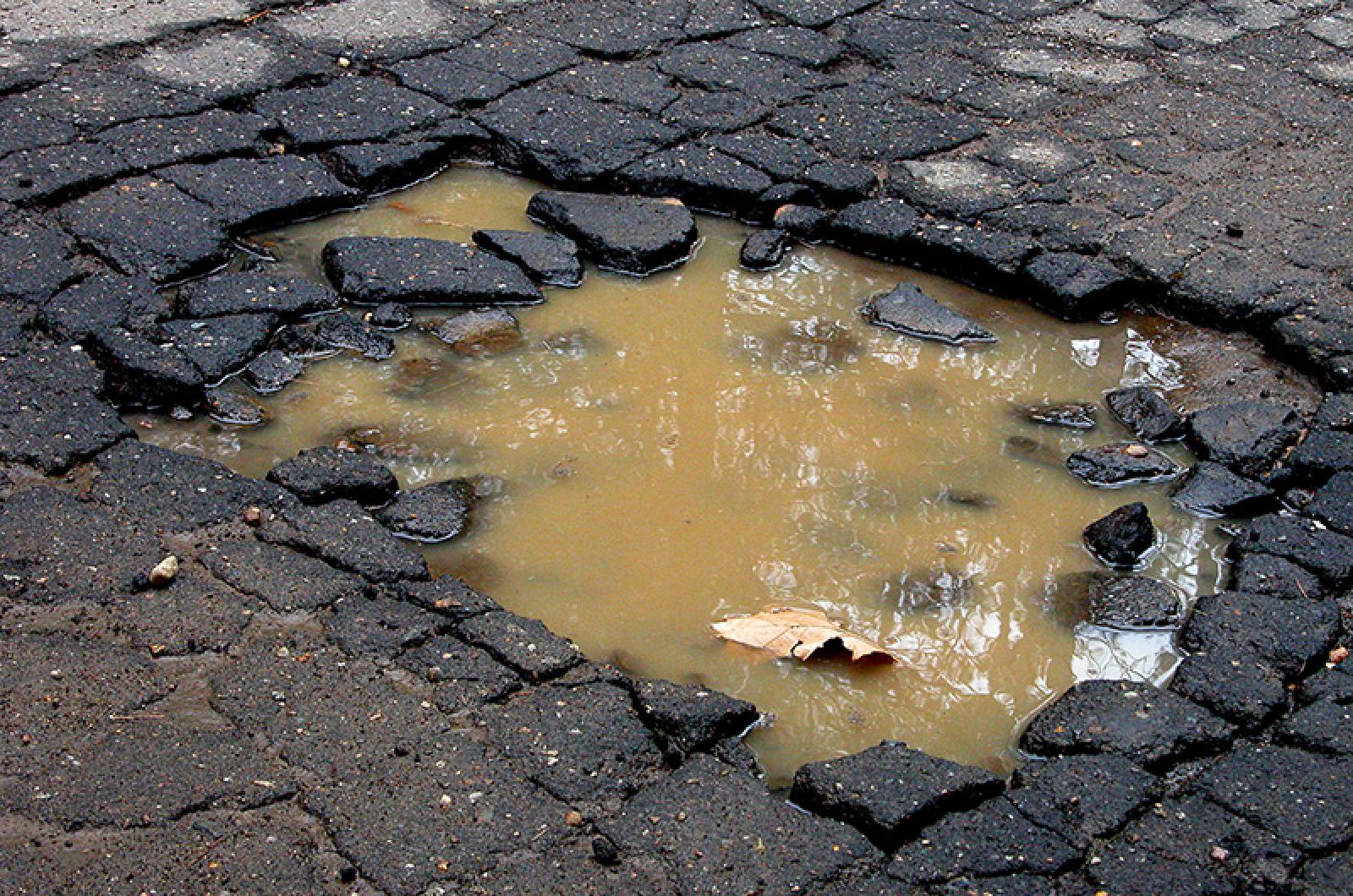It isn’t surprising that I have a bit of road rage.
No need to fear me in my little Mini Cooper, my displeasure is directed down. Down to the ground, or more accurately, the surface of the roads that are pitted with potholes. My concern crystallized after a recent visit to my mechanic. That rattling in my front end necessitated some significant repairs, he explained, reminding me, “You do live and work down long dirt roads.”
The needed repairs put me in good company. AAA estimates the damage to vehicles from potholes at about three billion dollars per year. Another source suggests an annual expenditure of $377 per vehicle, though the cost of my repairs greatly exceeded that average. It could have been a lot worse. Three thousand residents in India are killed annually by accidents involving potholes.
Potholes are generally understood to happen most often in the spring, but they can develop at any time when there is water. Freeze and thaw cycles are seen as the main culprit for paved roads. With changes in temperatures, water expands and contracts in the material under the asphalt, damaging its rigid surface and leading to cracks, crumbles, and weak spots that become potholes with the added stress of vehicles using those compromised roads.
Water is also to blame for potholes in dirt roads, though other contributing factors can include inadequate drainage, poor road construction and maintenance, weak spots due to pockets of organic matter such as stumps, and insufficient surface pitch.
The problem of potholes in not unique, nor is my exasperation. Potholes are big business and also bad for business: they cause problems for individuals, commerce and communi
ties. There are an estimated 55 million potholes on United States roads, and the annual investment to maintain highways, roads and bridges has been estimated at $68 billion. The cost to American businesses will be $240 billion over the next three years. Domino’s Pizza is one of the businesses that are directly affected by potholes, and they have taken a no-holes barred approach to mitigating their losses. Domino’s developed a program called Paving for Pizza, which provides grants to eligible cities to fix the potholes, but requires repaired potholes to be painted with their logo. This accomplishes the goals of advertising and road repair, though I can’t confirm that the smooth roads improve the taste of their pizza. In Massachusetts, you might be able to see these logos in Fitchburg, which has received funding from this program.
Creative solutions have been suggested and implemented across the country. To keep up with them all, go to pothole.info, a website devoted to all things potholes. New York city has social media and websites including The Daily Pothole that tallies the number of potholes filled per day. Edmonton, the capital of the Canadian province Alberta, is the self-proclaimed pothole capital of the world and spends 4.8 million per year to manage their 450,000 potholes.
Many towns and cities have developed mobile apps or website for reporting and following the repairs of potholes. On the Vineyard, you can go to seeclickfix.com/Tisbury or seeclickfix/Chilmark to report potholes or other municipal problems and track the repairs.
As we travel down the road of life and the roads of the Vineyard, we can only do our best to avoid the potholes of both.
Suzan Bellincampi is director of the Felix Neck Wildlife Sanctuary in Edgartown, and author of Martha’s Vineyard: A Field Guide to Island Nature and The Nature of Martha’s Vineyard.




Comments
Comment policy »